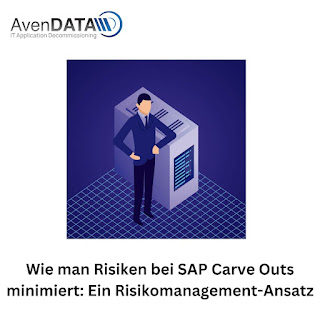Wie man Risiken bei SAP Carve Outs minimiert: Ein Risikomanagement-Ansatz
.jpg)
Einleitung Der SAP Carve Out , also die Abspaltung eines Unternehmensbereichs in ein eigenständiges System, ist ein komplexer und oft risikobehafteter Prozess. Diese Risiken können von technischen Herausforderungen über organisatorische Veränderungen bis hin zu Compliance-Problemen reichen. Ein gut durchdachtes Risikomanagement ist daher entscheidend, um den Carve Out erfolgreich und ohne größere Probleme zu bewältigen. Identifikation der Risiken Der erste Schritt im Risikomanagement ist die Identifikation potenzieller Risiken. Dies beinhaltet die Analyse aller relevanten Aspekte des Carve Outs, wie z.B. technische Infrastruktur, Datenmigration, regulatorische Anforderungen und organisatorische Veränderungen. Jedes dieser Elemente birgt spezifische Risiken, die identifiziert und dokumentiert werden müssen. Ein Workshop mit allen relevanten Stakeholdern kann dabei helfen, ein umfassendes Bild der möglichen Gefahren zu erhalten. Bewertung der Risiken Nach der Identifikation müssen ...
.jpg)
.jpg)
.jpg)
.jpg)
.jpg)
.jpg)